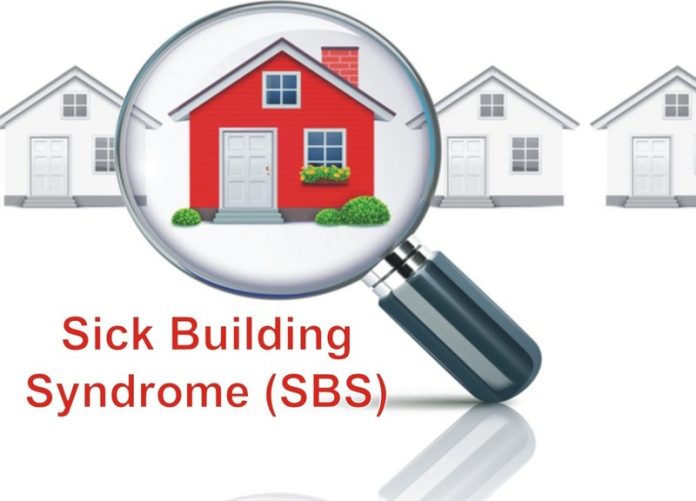Four years ago, my 12-year-old daughter’s virus wouldn’t go away after six weeks and two rounds of antibiotics; the cause was a sick house.
A fiberglass contamination had happened in our home a few months earlier, but we didn’t know it until my daughter’s conjunctivitis – or, what the doctors thought was pinkeye – would not resolve. She ended up getting Thrush from all the antibiotics, which made a believer out of me with regard to probiotics!
It can go on right before your very eyes, nose and throat
Our symptoms were subtle and might have stayed that way had the winter weather and closed-up home not enhanced the effects of the fiberglass contamination. This is one of the ways contamination can be going on in your home and you don’t realize it.
Runny noses, allergy-like symptoms, fatigue, hair a bit more dull than usual, red eyes, dullness to skin tone; these were the major symptoms that we both experienced to varying degrees for about three months.
Compare this to the list of symptoms below:
• headaches and dizziness
• nausea
• aches and pains
• fatigue
• poor concentration
• shortness of breath or chest tightness
• eye and throat irritation
• irritated, blocked or runny nose
Are these cold, flu or allergy symptoms? Yes, these are symptoms commonly associated with a cold, the flu or a bout with allergies or hay fever. And, they are also symptoms associated with a condition termed SBS: Sick Building Syndrome.
Even an open mind can close – and, a closed mind can open!
After an extended recovery from injuries sustained during an auto collision a few months prior to the house contamination, my doctor suggested a muscle test to see if my body was reacting to an environmental substance, like an allergen, that was wreaking havoc on my immune system, possibly delaying recovery.
The muscle test indicated that my body was reacting to formaldehyde. What the heck?! I’m pretty open-minded when it comes to traditional and alternative wellness approaches, but after those results I negated the test. I told him, “There’s no way; this test can’t be right. I am not exposed to formaldehyde.” We both shrugged our shoulders.
But, those alternative methods work enough to make themselves worthy; the test was right: my body, and my daughter’s both had formaldehyde exposure because the source of the fiberglass contamination turned out to be leaking insulation throughout the gas heating duct system in our home.
You never know what’s going on behind closed walls
*A friend’s plants suddenly all started dying. After an inspection revealed a kerosene leak from the duplex’s heater and was fixed, her plants began to grow again. She also said she felt better all of the sudden, but hadn’t quite realized she had been feeling poorly until she felt better. The symptoms of the kerosene contamination were subtle.
*Another friend’s cold symptoms were off and on for almost a year before it was discovered that there was mold behind the wall in her apartment’s bathroom.
*A whole family I know literally left their home one evening – after a year-long quest regarding unusual, chronic symptoms in family members revealed mold throughout the home.
Risk factors
NHS reports: Since the 1970’s, researchers have tried to identify the cause of SBS. As yet, no single cause has been identified. Most experts believe that it may be the result of a combination of things.
Possible risk factors for SBS may include:
• poor ventilation
• low humidity
• high temperature or changes in temperature throughout the day
• airborne particles, such as dust, carpet fibres or fungal spores
• airborne chemical pollutants, such as those from cleaning materials or furniture, or ozone produced by photocopiers and printers
• physical factors, such as electrostatic charges
• poor standards of cleanliness in the working environment
• inadequate ventilation when using chemical cleaning products
• poor lighting that causes glare or flicker on visual display units
• improper use of display screen equipment
• psychological factors, such as stress or low staff morale
A sick house or working in a sick building can be happening right before our eyes and we don’t know it’s happening. Don’t ignore subtle signs if patterns of illnesses, patterns of health, or patterns of house habits/office habits suddenly change.
There’s a reason for everything – whether you can see it or not. Don’t dismiss the possibility of a sick house or a sick building.








